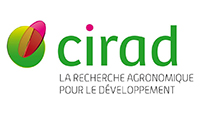Assessment of soil management practices in Vineyards using Sentinel-2: Challenges in enhancing soil organic carbon content prediction
Résumé
Vineyard management practices influence soil surface characteristics, which in turn affect the accuracy of models used to predict soil organic carbon (SOC) content via satellite remote sensing (Marques et al., 2010; Ruiz-Colmenero et al., 2013; Vaudour et al., 2022). It is crucial to identify such viticultural management practices to further assess their impact on carbon storage in viticultural soils. This study evaluates the ability of Sentinel-2 data time series to detect soil surface conditions associated with two soil management practices, cover crop (CC) and tillage (Till), in Spanish vineyards. Two plots were studied: the first (Aranda_Burgos) in the north, located in Aranda de Duero, covering an area of about 82 ha, and the second (Toledo_Bergonza) in the centre, located in Toledo, covering an area of about 180 ha. Both vineyards are trellis-trained with an inter-row spacing around 3 m. In order to consider soil surface condition aside from vine canopy vegetation, our methodology relies on a time series of Sentinel-2 data collected between January 2023 and February 2024. It involves using spectral indices (NDVI, IB, SI, NBR2, NSSI, RedI and Fe2) calculated from this time series within a 30-meter buffer around 60 points sampled on each plot in October 2023 and January 2024 and observed for their soil surface condition each. An analysis of the time series of these indices, as well as principal component analyses (PCA), were carried out to differentiate soil surface conditions according to CC or Till. Preliminary results show that the Toledo_Bergonza plot has greater variability in NDVI compared to the Aranda_Burgos plot, likely due to the diversity of agricultural practices. In addition, the Toledo_Bergonza plot shows a higher average NDVI, probably due to the specific characteristics of the vineyard for both CC and Till. The NSSI showed correlations with the percentage of coarse elements on the surface, and its PCA identified clusters of points that require further study. For the Aranda_Burgos plot, only the IB, NSSI and Fe2 indices identified clusters of points, while for the Toledo_Bergonza plot, all seven indices revealed distinct clusters. These preliminary results highlight the significant variability in soil surface condition, raising additional challenges, in addition to the presence of grapevines, for the prediction of SOC content using satellite remote sensing.
| Origine | Fichiers produits par l'(les) auteur(s) |
|---|---|
| licence |
Domaine public
|
